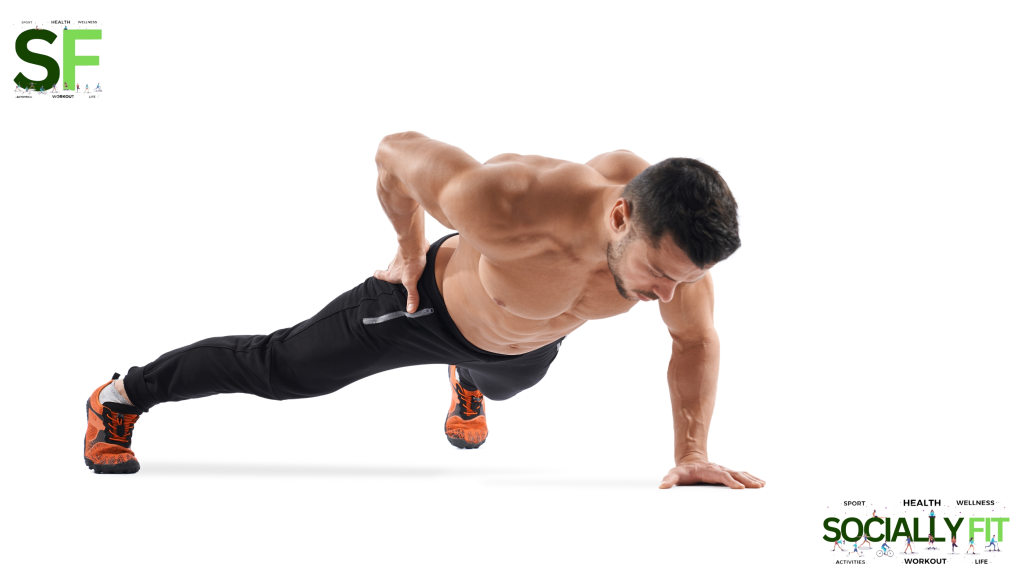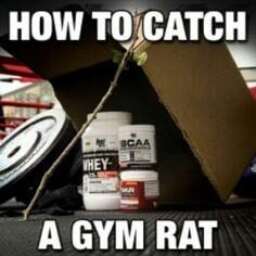5 Best Exercises for a Beginner Home Workout: Get Fit at Home
Introduction
Starting a workout routine at home can be both exciting and overwhelming. But don’t worry, I’m here to help you kickstart your fitness journey with ease. Whether you’re looking to get fit, lose weight, or simply stay active, home workouts are a fantastic way to achieve your goals. Let’s dive into some of the best exercises for beginners that you can do right in your living room.
Understanding Beginner Workouts
What Defines a Beginner Workout?
A beginner workout is specifically designed for individuals who are new to exercise or returning after a long hiatus. Initially, these routines focus on fundamental movements that are easy to learn and execute. For example, exercises like bodyweight squats, push-ups, and planks are staples in beginner routines because they target multiple muscle groups and can be performed without any equipment. Furthermore, beginner workouts emphasize proper form and technique, which helps in preventing injuries and building a strong foundation for more advanced exercises in the future.
Additionally, beginner workouts are structured to be less intense, allowing your body to gradually adapt to the new physical demands. This gradual increase in intensity is crucial because it helps prevent burnout and overtraining, which are common pitfalls for those who dive into fitness too quickly. Typically, a beginner workout will include a balanced mix of cardiovascular exercises, strength training, and flexibility work. As you progress, the complexity and intensity of your workouts can be increased, but the initial goal is to establish a consistent routine that fosters a habit of regular exercise.
Setting Realistic Goals
Setting realistic goals is essential when starting a new workout routine, especially for beginners. Initially, it’s important to focus on achievable and specific objectives rather than aiming for dramatic changes overnight. For instance, instead of targeting a lofty goal like losing 20 pounds in a month, aim to exercise three times a week for the first month. This approach not only makes the goal more manageable but also helps in building a consistent workout habit. Moreover, realistic goals should consider your current fitness level and lifestyle. By setting smaller, incremental targets such as gradually increasing the duration of your workouts or improving your form, you create a positive feedback loop that encourages continued effort and progress. Celebrating these small victories keeps you motivated and lays a strong foundation for achieving long-term fitness success.
Exercise 1: Push-Ups

Benefits of Push-Ups
Push-ups are excellent for building upper body strength. They work your chest, shoulders, triceps, and core, making them a well-rounded exercise.
How to Perform Push-Ups Correctly
Standard Push-Up
- Start in a plank position with your hands shoulder-width apart.
- Lower your body until your chest almost touches the floor.
- Push yourself back up to the starting position.
Modified Push-Up
- Begin on your knees instead of your toes.
- Follow the same steps as the standard push-up.
Exercise 2: Squats

Benefits of Squats
Squats are a powerhouse exercise that targets your thighs, hips, and buttocks. They help improve balance, coordination, and overall lower body strength.
How to Perform Squats Correctly
Bodyweight Squat
- Stand with feet shoulder-width apart.
- Lower your body as if sitting back into a chair.
- Keep your chest up and knees behind your toes.
- Return to the starting position.
Goblet Squat
- Hold a weight close to your chest.
- Perform the squat as described above.
Exercise 3: Planks

Benefits of Planks
Planks are phenomenal for strengthening your core. They engage multiple muscle groups, including your shoulders, back, and legs.
How to Perform Planks Correctly
Standard Plank
- Start on your forearms and toes.
- Keep your body in a straight line from head to heels.
- Hold the position, engaging your core.
Side Plank
- Lie on your side with legs extended.
- Prop up your body on one forearm.
- Lift your hips, forming a straight line from shoulders to feet.
Exercise 4: Lunges

Benefits of Lunges
Lunges are fantastic for toning your legs and improving balance. They target your quadriceps, hamstrings, and glutes.
How to Perform Lunges Correctly
Forward Lunge
- Stand tall, then step forward with one leg.
- Lower your hips until both knees are bent at 90 degrees.
- Push back to the starting position.
Reverse Lunge
- Step backward with one leg.
- Lower your hips until both knees are bent at 90 degrees.
- Return to the starting position.
Exercise 5: Glute Bridges

Benefits of Glute Bridges
Glute bridges are excellent for strengthening your lower back, glutes, and hamstrings. They also help improve hip mobility.
How to Perform Glute Bridges Correctly
Standard Glute Bridge
- Lie on your back with knees bent and feet flat on the floor.
- Lift your hips until your body forms a straight line from shoulders to knees.
- Lower back down to the starting position.
Single-Leg Glute Bridge
- Extend one leg while performing the standard glute bridge.
- Alternate legs for a balanced workout.
Creating a Beginner Workout Routine
Creating a beginner workout routine involves structuring a balanced plan that includes a mix of cardiovascular exercises, strength training, and flexibility work. The goal is to develop a habit of regular exercise while progressively increasing the intensity and complexity of workouts. Start by assessing your current fitness level and determining realistic goals, such as improving endurance, building muscle, or losing weight. Ensure your routine includes a proper warm-up to prepare your body and a cool-down to aid in recovery. Variety is key to keeping the workouts engaging and effective, so incorporate different exercises that target various muscle groups. It’s also crucial to listen to your body and allow sufficient rest between sessions to prevent overtraining and injuries. By gradually increasing the duration and intensity of your workouts, you can build a solid foundation for long-term fitness success.
10 Steps to Creating a Beginner Workout Routine
- Assess Your Fitness Level: Determine your current fitness level to choose appropriate exercises and intensity.
- Set Realistic Goals: Define clear and achievable fitness goals to stay motivated and track progress.
- Choose a Variety of Exercises: Include a mix of cardio, strength training, and flexibility exercises for a balanced routine.
- Schedule Your Workouts: Plan to exercise three to four times a week, with rest days in between.
- Start with a Warm-Up: Begin each session with a 5-10 minute warm-up to prepare your muscles and joints.
- Focus on Proper Form: Ensure you perform each exercise with correct form to maximize effectiveness and prevent injuries.
- Include Compound Movements: Incorporate exercises like squats, push-ups, and lunges that work multiple muscle groups.
- Gradually Increase Intensity: Slowly raise the difficulty of your workouts by adding more repetitions, weight, or advanced variations.
- Cool Down and Stretch: End each session with a cool-down and stretching routine to promote flexibility and recovery.
- Monitor and Adjust: Track your progress and adjust your routine as needed to continue challenging yourself and achieving your goals.
Tips for Staying Motivated
- Set Clear Goals: Define specific, achievable fitness goals to keep you focused and motivated.
- Create a Routine: Establish a regular workout schedule and stick to it to build a consistent exercise habit.
- Track Your Progress: Use a fitness journal or app to record your workouts and celebrate small milestones.
- Mix It Up: Vary your exercises and try new activities to keep your workouts interesting and prevent boredom.
- Find a Workout Buddy: Partner with a friend or join a fitness group for support, accountability, and motivation.
- Reward Yourself: Set up a reward system for reaching your fitness goals, such as treating yourself to new workout gear.
- Stay Positive: Focus on the benefits of exercising and how great you feel after a workout, rather than any difficulties.
- Create a Motivating Environment: Set up a dedicated workout space with inspiring music, posters, or quotes.
- Visualize Success: Imagine yourself achieving your fitness goals to reinforce your commitment and motivation.
- Stay Flexible: Be willing to adjust your routine if needed, but always find a way to keep moving and stay active.
Modifying Exercises for Your Fitness Level
Modifying exercises according to your fitness level ensures a safe and effective workout experience tailored to your capabilities. Here’s how you can adjust exercises to match your current fitness level:
- Reducing Intensity: If an exercise feels too challenging, start by reducing the intensity. For example, perform push-ups on your knees instead of toes.
- Limiting Range of Motion: Gradually increase the range of motion as you build strength. For squats, begin with partial squats and gradually go deeper.
- Using Assistance: Use assistance tools like resistance bands or stability balls to support your body weight during exercises like planks or lunges.
- Adjusting Repetitions: Start with fewer repetitions and gradually increase as you gain strength and endurance.
- Choosing Beginner Variations: Opt for beginner variations of exercises. For instance, perform assisted pull-ups instead of full bodyweight pull-ups.
- Adding Support: Use support structures such as a chair or wall for balance during exercises like single-leg glute bridges or standing calf raises.
- Listening to Your Body: Pay attention to how your body responds to each exercise. Adjust the difficulty level to maintain a challenging yet comfortable workout.
- Progressing Gradually: Aim to progress gradually over time by increasing repetitions, duration, or intensity as your fitness improves.
- Consulting a Trainer: If unsure about modifications, seek guidance from a fitness trainer or physical therapist to tailor exercises to your specific needs.
- Monitoring Progress: Track your progress to gauge improvements and adjust modifications accordingly to continue challenging yourself effectively.
Importance of Nutrition
Proper nutrition plays a crucial role in supporting your fitness goals and overall health. Fueling your body with the right nutrients before and after workouts can enhance performance, improve recovery, and maximize the benefits of exercise. For instance, consuming a balanced diet that includes adequate protein helps repair and build muscle tissues damaged during exercise. Carbohydrates provide energy for workouts, while healthy fats support overall cellular function and hormone production.
Moreover, hydration is essential for maintaining optimal performance and preventing fatigue. Drinking enough water before, during, and after exercise helps regulate body temperature, transport nutrients, and remove waste products from muscles. Additionally, vitamins and minerals obtained through a varied diet support immune function, bone health, and overall well-being. By prioritizing nutrition alongside your workout routine, you can achieve better results, sustain energy levels, and support long-term fitness goals effectively.
Conclusion
Embarking on a home workout journey is a fantastic step towards better health. These exercises provide a solid foundation to build strength, improve flexibility, and boost overall fitness. Remember to start slow, stay consistent, and listen to your body. You’ve got this!
FAQs
- How often should I work out as a beginner? Aim for three to four times a week, with rest days in between.
- Do I need equipment for a beginner home workout? No, bodyweight exercises are sufficient for beginners.
- How long should each workout session last? Start with 20-30 minute sessions and gradually increase as you build endurance.
- Can I lose weight with these exercises? Yes, combined with a healthy diet, these exercises can help you lose weight.
- How do I know if I’m progressing? Track your workouts and note improvements in strength, endurance, and how you feel overall.
Click here to know more about weight loss. Subscribe to workout with hunar for weight loss and workout videos.














